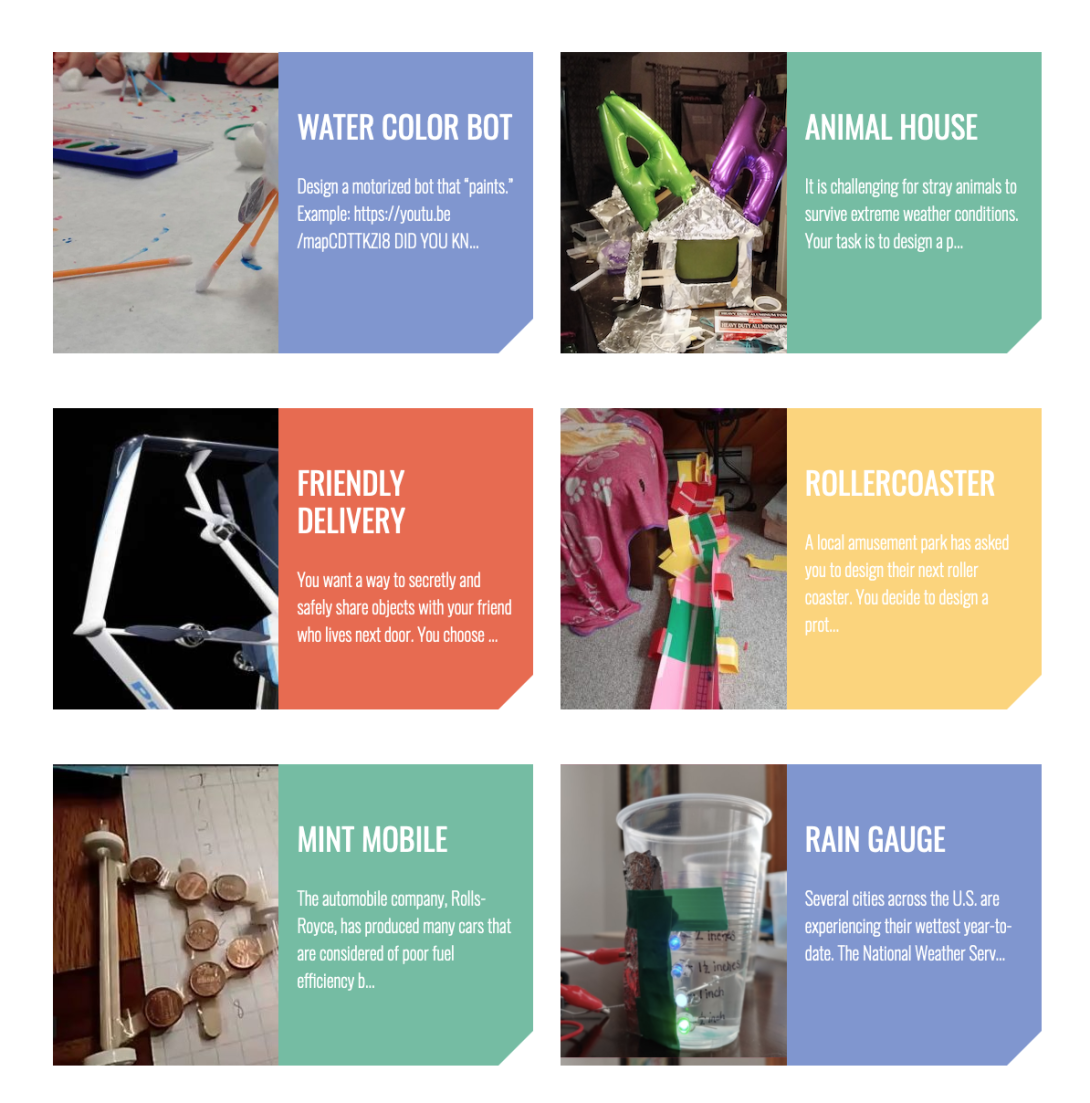Family Engineering Kits
Description
About the Collaborative Project
Our goal is to develop, implement, and refine a program for integrating engineering design practices with an emphasis on emerging technologies and utilization of recyclable materials into home environments of families. There are currently two components of this project – engineering kits that can be completed in any environment, particularly in home environments, and the identification and development of distinct, personal engineering projects.
Examples of the Personal Projects
“My project was meant to help people in third world countries or people who can’t afford electricity in their homes. The solution was to make small solar panels so people would have energy for appliances necessary for everyday living.” (Zac)
“My project is a remote controlled delivery robot to help people who can’t get out of bed or are sick…I was thinking about someone in a nursing home or something like that. My solution was to build a robot and program it to go to each of the rooms in our house in the morning.” (Cindy)
“Our project is a soap dispenser that will use all the soap. A lot of times when it gets to the bottom, the straw cannot reach that last bits of soap.” (Beth)
Engineering Kits
Water Color Bot: Design a motorized bot that “paints.” Example: https://youtu.be/mapCDTTKZI8
Animal House: It is challenging for stray animals to survive extreme weather conditions. Your task is to design a prototype of an animal house that will help stray animals survive extreme weather conditions common to where you live—rain storms, really hot and really cold temperatures, earthquakes, or tornados.
Friendly Delivery: You want a way to secretly and safely share objects with your friend who lives next door. You choose to design a prototype that will deliver an object at least 6 feet.
Rollercoaster: A local amusement park has asked you to design their next roller coaster. You decide to design a prototype suitable for a marble to travel from the start to the finish. You will use the prototype during your presentation to the local amusement park.
Mint Mobile: The automobile company, Rolls-Royce, has produced many cars that are considered of poor fuel efficiency by the United States Department of Energy. Similar to automotive engineers, your task is to build a prototype to test the effect of different variables to report recommendations to the company. The prototype should travel along a straight path down a ramp and travel as far as possible with a minimum of 8 feet.
Rain Gauge: Several cities across the U.S. are experiencing their wettest year-to-date. The National Weather Service is asking for your help in measuring and reporting the amount of rainfall in your city. Using the provided material, build a rain gauge to measure the amount of liquid precipitation over a set period of time.
Soccer Bot: You have been asked by a popular game company to develop handheld soccer bots for a new indoor game for two players. A soccer bot is a robot that plays soccer. For this game, players score goals by hitting a small ball into the opposing “net”. (Psst. You are Player 1. Who is Player 2?) Check out this video to see the game being played: https://youtu.be/9NViVG80CHI
DIY Grabbers: Grabbers are handheld tools that can be used to retrieve items from a distance. Watch the following video for more information: https://youtu.be/_gw6FlLANtA. Design a prototype of a grabber that can pick up three different objects from at least two feet away without damaging or dropping them.
Toy Hack: You have been asked by a toy refurbish shop to brainstorm ways to give old toys a second life using electronic parts. Make a prototype that renovates, redesigns, and/or remixes an old toy. The prototype should change the look and feel of the toy, or the toy’s role in our life, using new materials.
Trendy Tennies: You have been asked by a popular shoe company to design a new trendy tennis shoe for unique needs of their four customers. Pick one of the customers and design a tennis shoe to meet their needs. You decide to use everyday products to construct the tennis shoe prototype.
Pedometer: Design a wearable pedometer prototype that will track children’s number of steps. Task adapted from Teach Engineering STEM curriculum developed at the University of Colorado.
Resources submitted by ITEST projects may be hosted on third-party sites or require a fee or membership for access. Permission to use these materials must be obtained from the publisher or the author listed on each resource.
